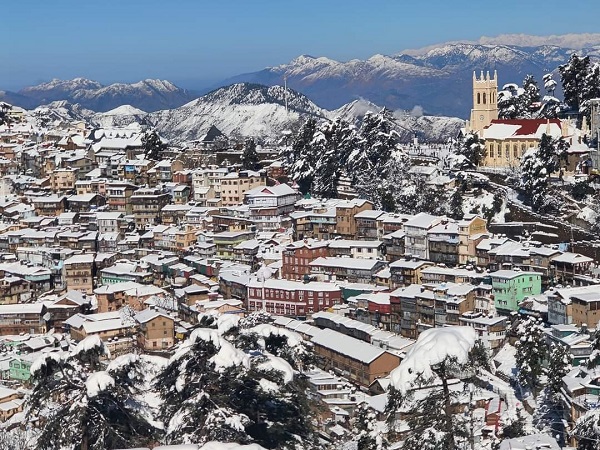Shimla, (Asian independent) Heavy snowfall thawed the frozen memories of Simla — the erstwhile capital of British India, as a thick quilt, and not blanket, of white covered the Queen of Hills, now called Shimla, in the past two days — the highest spell in one and a half decades.
Old-timers recalled on Saturday that for almost two decades Shimla, which was planned for a maximum population of 16,000 and now supports over 2.50 lakh, has not recorded this kind of heavy snowfall.
Jiya Lal Panta, a retired government employee settled in the city since 1960, said till the 1980s, heavy snow was a normal feature of the town.
“If my memory serves me right, the last time the heavy snowfall occurred was during the winter of 1990-91 when the town was cut off from the rest of the country for more than two weeks,” he said.
Another resident, Kavita Sud, 77, said: “The last two days of snowfall in Shimla reminds me of the childhood days when snowstorm dumps heavy snow, causing travel disruptions not for days but for weeks.
“The heavy snowfall at that time forced the authorities to shut down state services, schools, non-essential shops and even banks.”
As heavy snow has eluded this erstwhile summer capital of British India in recent times, the “snow manual” of the administration, followed since the British Raj, has virtually been lying in cold storage, admit officials.
The Shimla Snow Manual lists the responsibilities and duties of the administration during snow such as the setting up of control rooms, deploying men and machinery to clear roads and pathways as well as maintaining power and drinking water supplies.
The local administration, before the onset of winter every year, holds a meeting to review measures and assign duties to handle any emergency in case of heavy snow.
Officials admit that for the past several decades, this meeting — called the snow manual meeting — had become a mere ritual.
“Over the years, the intensity of snowfall in Shimla has decreased. So the snow manual has lost its relevance,” admitted an official who did not wish to be named.
This time the electricity, landline phones and cable television were snapped in several localities of Shimla owing to falling of trees on supply lines. Water supply was also hampered. Officials say it will days for the restoration of essential services.
However, Shimla woke up to a sunny morning on Saturday after three days of snow.
Since a majority of the roads piled with snow and treacherous owing to slippery conditions and early morning frost, the local administration ordered to keep government offices, except essential services, and educational institutions in Shimla district shut.
The road leading to the Indira Gandhi Medical College and Hospital, the stateaes prominent hospital, is too slippery for traffic and pedestrians.
Also the administration has asked tourists to avoid travelling in their vehicles beyond Shimla as the road is slippery after the snowfall.
According to the local Met office, in the past two days certain areas of Shimla like the Ridge, the US Club and Jakhu hills received more than 60 cm snowfall.
Although the Shimla Municipal Corporation has started clearing the snow on Cart Road and some VIP roads, most of the other roads are covered in a thick blanket of snow.
Journalist Himkiran Manta said that till the mid 1990s heavy snowfall was a normal feature of Shimla. There used to be four to five spells of heavy snow throughout the winter and in between there were mild to moderate ones.
“Now the intensity of snowfall is quite less compared to the past, but the miseries are more,” he said.
The civic body earlier used to sprinkle salt on the roads ahead of snowfall and that helped in the clearing-up process.
“The government promoted the plantation of ornamental trees in Shimla. They are fragile and uprooted with slight high-intensity snowfall. The sturdy deodars (cedars) forests are fast depleting from Shimla’s skyline,” he added.
As per Met office records, Shimla experienced 62 cm of snow on February 12, 2007, which was the highest on a single day in the past 99 years.
In 2005, there was 94.3 cm of snow last month but it was spread over seven days. In 2004, 96.6 cm of snow fell in the whole of January.
Shimla, once a village that served as the summer capital of British India between 1864 and 1939 and as the seat of the Himachal Pradesh government subsequently, is known as the ‘Queen of Hills’ — the moniker given to the hill station by the British colonial rulers and the town still has 91 British-era heritage buildings.
A coffee table book, “Har Ghar Kuchh Kehta Hai” — literally meaning every house tells a stor’ — published by the state Tourism Department says as the ‘summer capital’ the spelling was Simla and official addition of ah’ made it Shimla in the 1980s.








